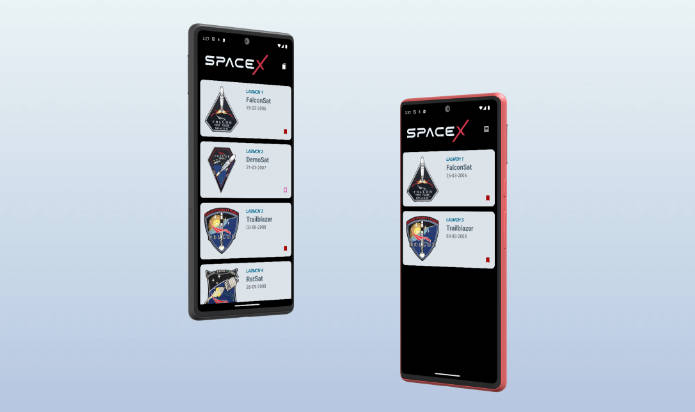Spring for Android
Spring for Android is a library that is designed to provide components of the Spring Framework family of projects for use in native Android applications.
Code of Conduct
This project adheres to the Contributor Covenant code of conduct. By participating, you are expected to uphold this code. Please report unacceptable behavior to [email protected].
Features
- A REST client for Android
- Auth support for accessing secure APIs
Download Artifacts
The new Android Build System provides a Gradle plugin for building Android apps, and Gradle itself supports external dependency resolution via Maven repositories. Additionally, the Android Maven Plugin makes it possible to build Android applications utilizing the power of Maven dependency management. See downloading Spring artifacts for Maven repository information.
Rest Template
The Rest Template library can be included in your project using Gradle or Maven.
Gradle:
dependencies {
compile("org.springframework.android:spring-android-rest-template:${version}")
}
Maven:
<dependencies>
<dependency>
<groupId>org.springframework.android</groupId>
<artifactId>spring-android-rest-template</artifactId>
<version>${org.springframework.android-version}</version>
</dependency>
</dependencies>
Spring Repositories
The following Maven repositories are available from Spring. You do not need to include all three repositories, rather select the one that corresponds to the release type of the dependency. GA releases are also available through Maven Central.
Gradle:
repositories {
maven { url "https://repo.spring.io/release" }
maven { url "https://repo.spring.io/milestone" }
maven { url "https://repo.spring.io/snapshot" }
}
Maven:
<repositories>
<repository>
<id>spring-repo</id>
<name>Spring Repository</name>
<url>https://repo.spring.io/release</url>
</repository>
<repository>
<id>spring-milestones</id>
<name>Spring Milestones</name>
<url>https://repo.spring.io/milestone</url>
</repository>
<repository>
<id>spring-snapshots</id>
<name>Spring Snapshots</name>
<url>https://repo.spring.io/snapshot</url>
<snapshots>
<enabled>true</enabled>
</snapshots>
</repository>
</repositories>
Example Build Configuration
The following is an example build.gradle that illustrates how to include the spring-android-rest-template module along with the jackson-databind library for marshaling JSON data. Note the packagingOptions section which filters specific files that can cause APK packaging to fail.
apply plugin: 'com.android.application'
android {
compileSdkVersion 20
buildToolsVersion '20.0.0'
defaultConfig {
applicationId 'org.springframework.demo'
minSdkVersion 15
targetSdkVersion 20
versionCode 1
versionName '1.0'
}
buildTypes {
release {
runProguard false
proguardFiles getDefaultProguardFile('proguard-android.txt'), 'proguard-rules.pro'
}
}
packagingOptions {
exclude 'META-INF/ASL2.0'
exclude 'META-INF/LICENSE'
exclude 'META-INF/license.txt'
exclude 'META-INF/NOTICE'
exclude 'META-INF/notice.txt'
}
}
dependencies {
compile fileTree(dir: 'libs', include: ['*.jar'])
compile 'com.android.support:support-v4:20.+'
compile 'org.springframework.android:spring-android-rest-template:2.0.0.M1'
compile 'com.fasterxml.jackson.core:jackson-databind:2.4.1.3'
}
Documentation
See the current Javadoc and reference docs.
Sample Applications
Several example projects are available in the samples repository.
Getting Started Guides
The spring.io web site contains many getting started guides that cover a broad range of topics.
- Consuming a RESTful Web Service with Spring for Android
- Consuming XML from a RESTful Web Service with Spring for Android
- Building Android Projects with Gradle
- Building Android Projects with Maven
- Installing the Android Development Environment
Support
Check out the spring-android tag on Stack Overflow. Commercial support is also available.
Issue Tracking
Report issues via the Spring Android JIRA. While JIRA is preferred, GitHub issues are also welcome. Understand our issue management process by reading about the lifecycle of an issue.
Build from Source
-
Clone the repository from GitHub:
$ git clone git://github.com/spring-projects/spring-android.git
Note: If you are unfamiliar with Git, you may want to try GitHub for Windows or GitHub for Mac.
-
Navigate into the cloned repository directory:
$ cd spring-android -
The project uses Gradle to build:
$ ./gradlew build
-
Install jars into your local Maven cache (optional)
$ ./gradlew install
Import Source into your IDE
Eclipse
-
To generate Eclipse metadata (.classpath and .project files):
$ ./gradlew eclipse
-
Once complete, you may then import the projects into Eclipse as usual:
File -> Import -> Existing projects into workspaceNote: Spring Tool Suite includes support for Gradle, and you can simply import as Gradle projects.
IDEA
Generate IDEA metadata (.iml and .ipr files):
$ ./gradlew idea
Tests
There are three Android Test Projects located in the “test” folder of the repository that correspond to the three Spring for Android Modules (Core, Rest Template, and Auth). To run the suite of tests, perform the following steps. The parent POM located in the root of the “test” folder will execute each test project on all attached devices and emulators. The tests will fail if there is no device or emulator attached.
Run the Android tests:
$ ./gradlew testAndroid
Note: To view the output, use the –info parameter when running Gradle
Gradle runs the tests using the Android Maven Plugin. Alternatively the test suite can be executed using the following Maven command:
$ mvn clean install -f ./test/pom.xml
Test results are available in the following directory for each test project:
/test/<test-project>/target/surefire-reports
Contributing
Pull requests are welcome. See the contributor guidelines for details.
Stay in Touch
Follow @SpringCentral as well as @SpringAndroid on Twitter. In-depth articles can be found at The Spring Blog, and releases are announced via our news feed.
License
Spring for Android is released under version 2.0 of the Apache License.
